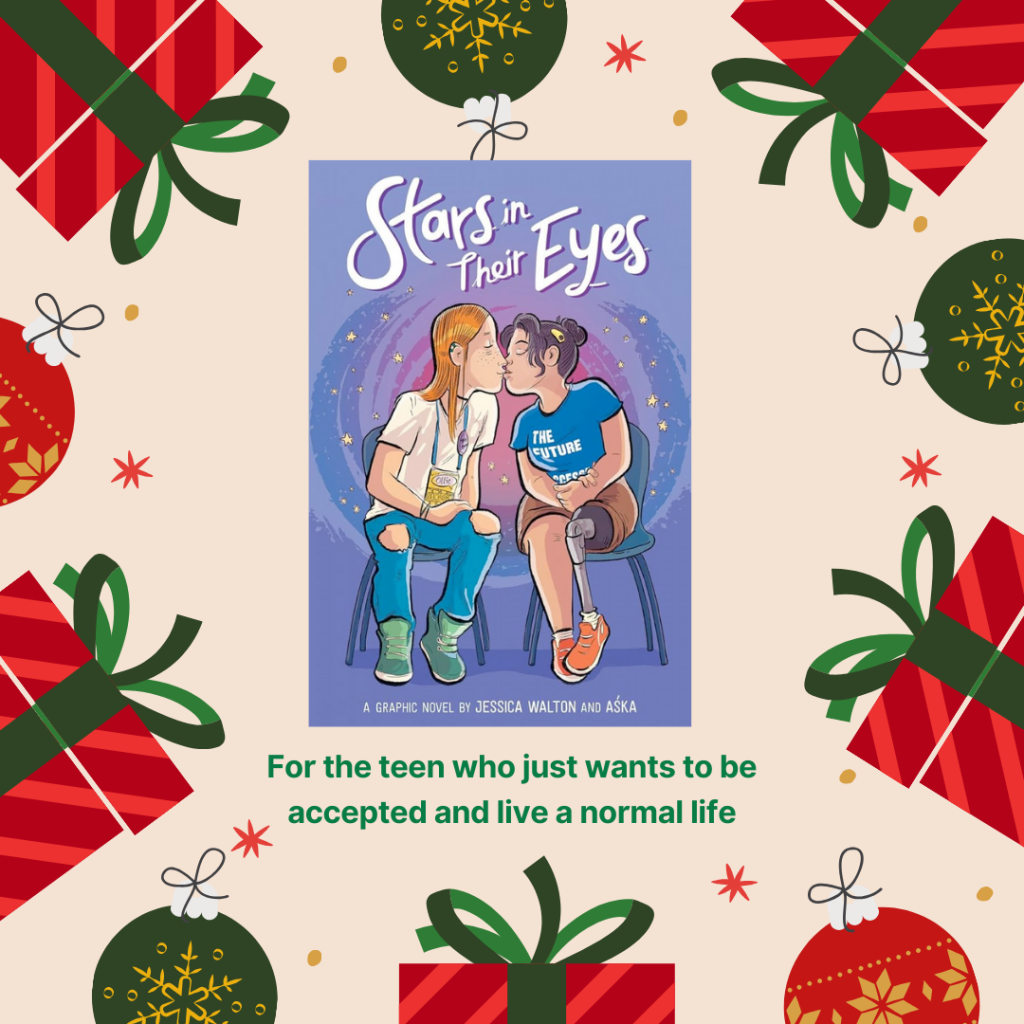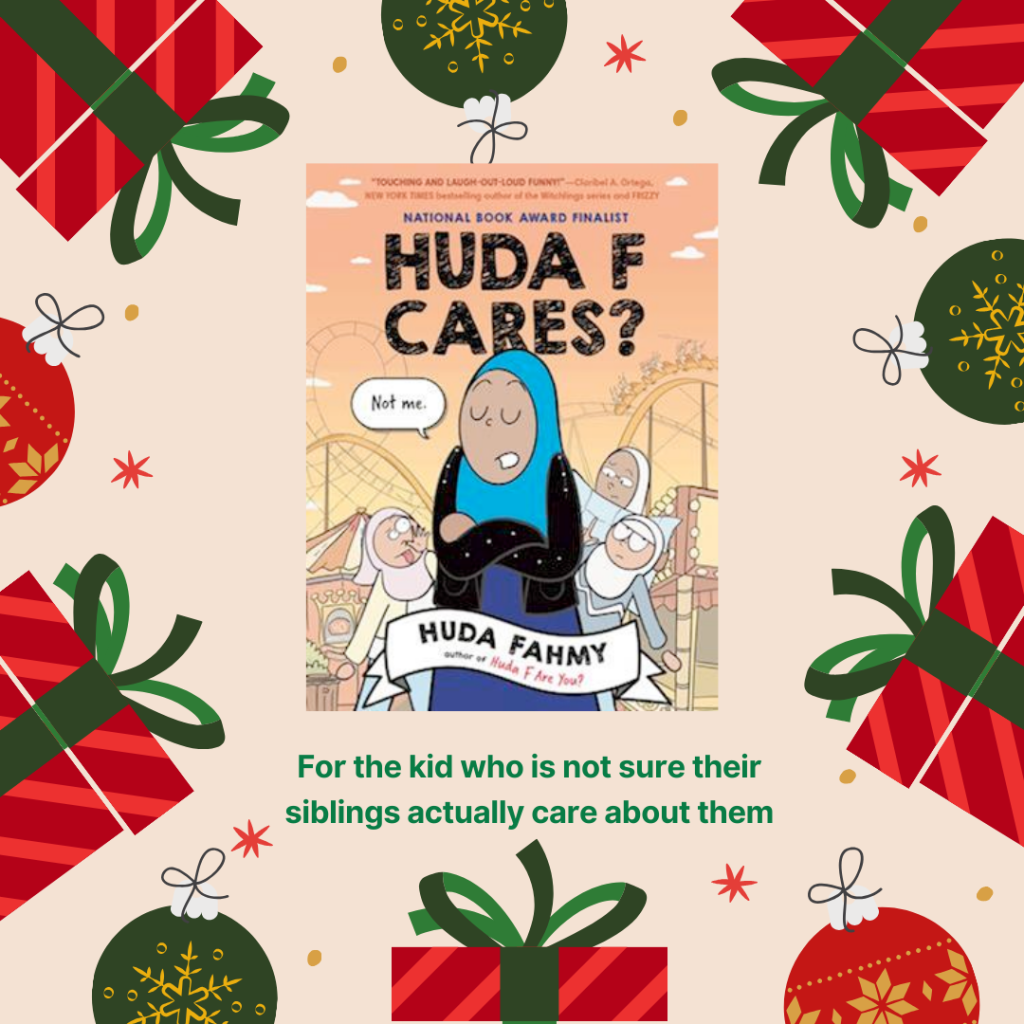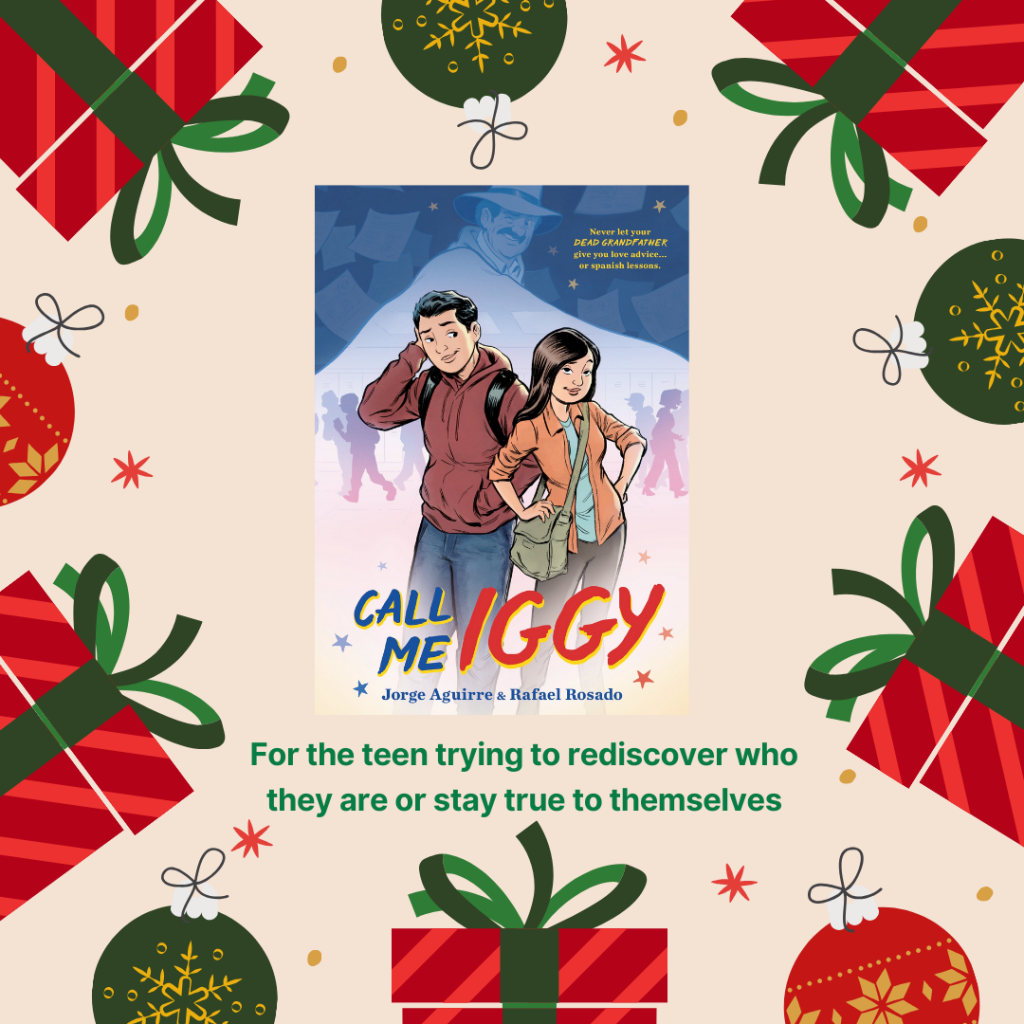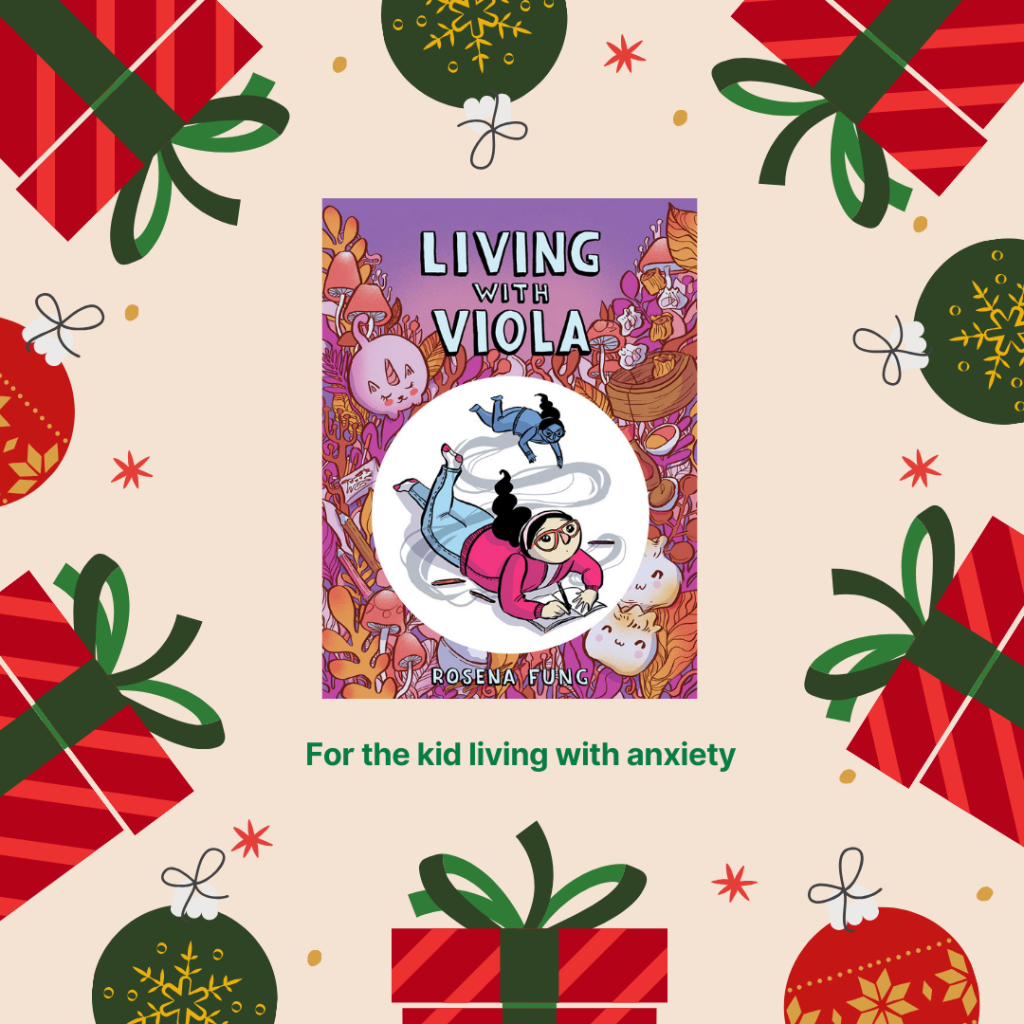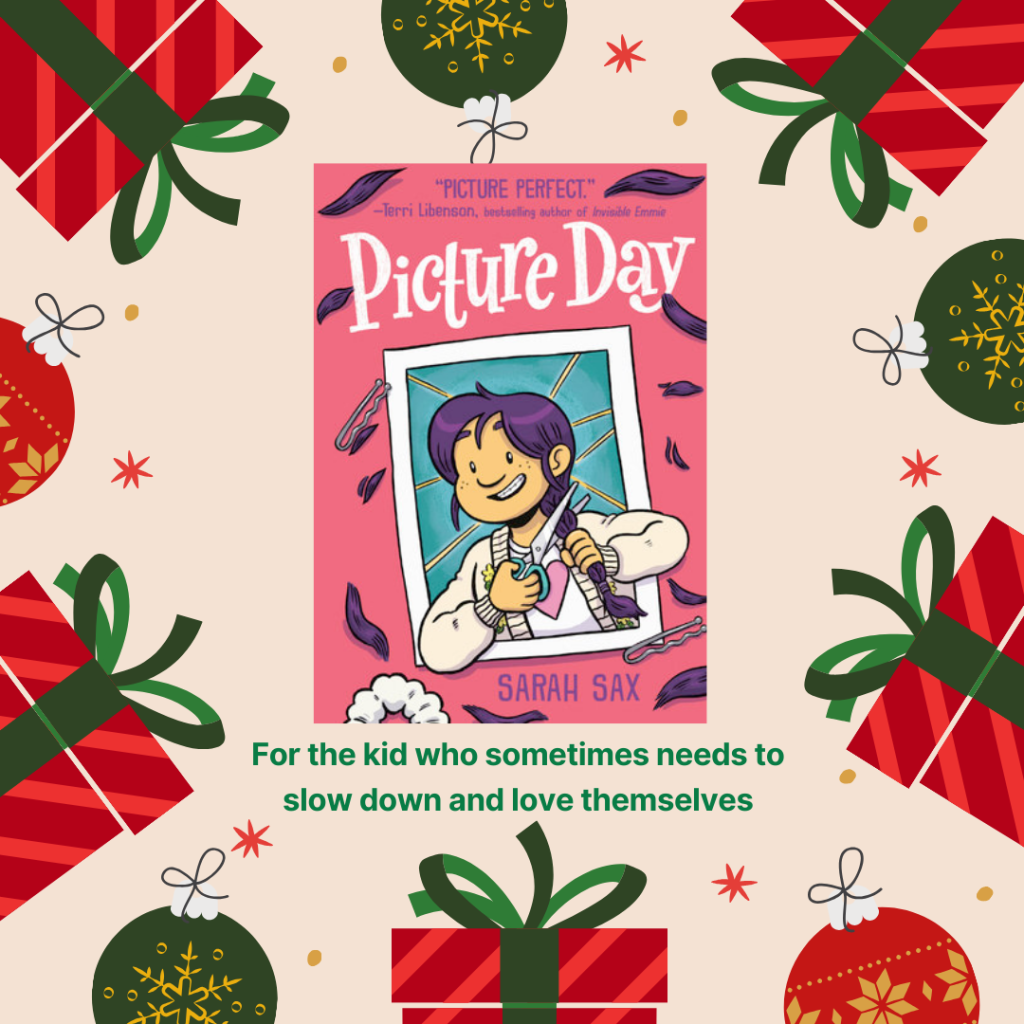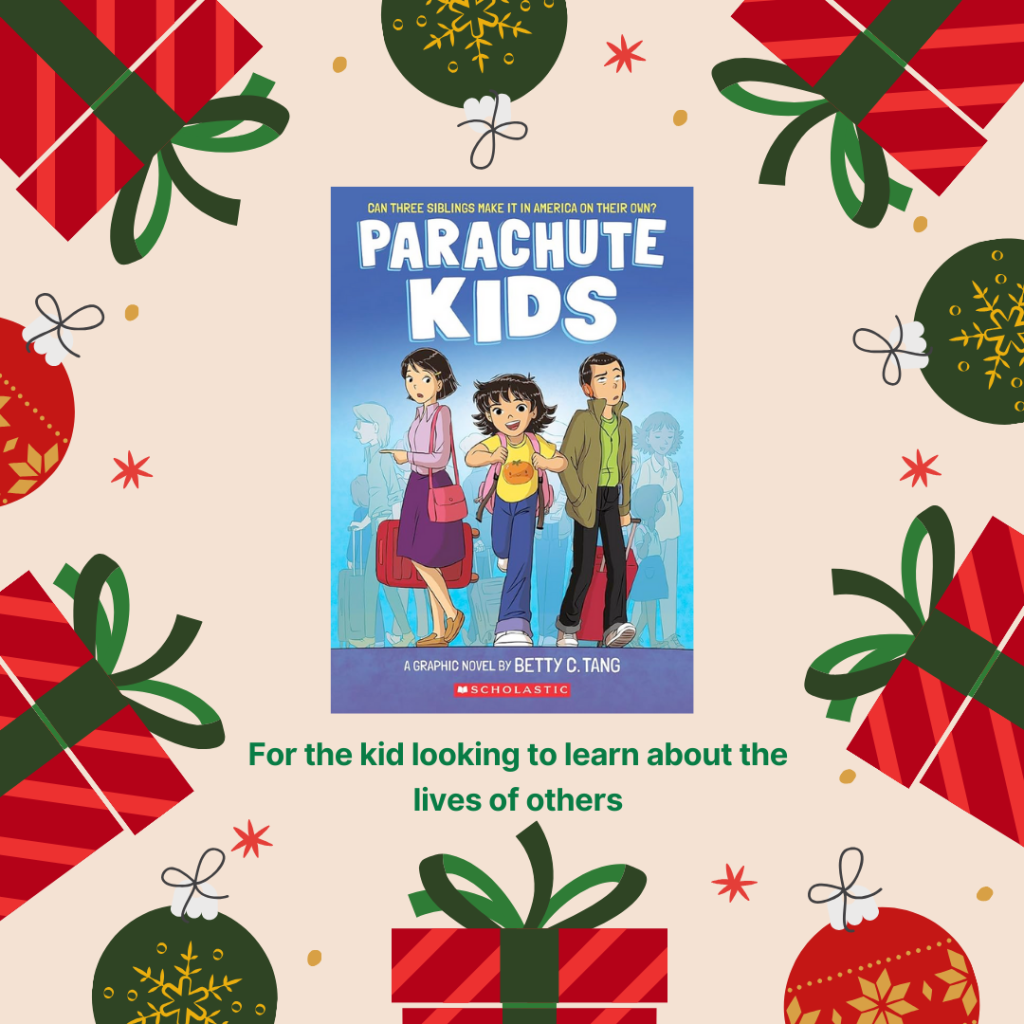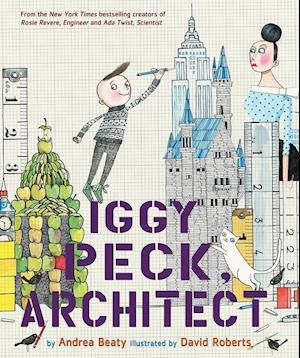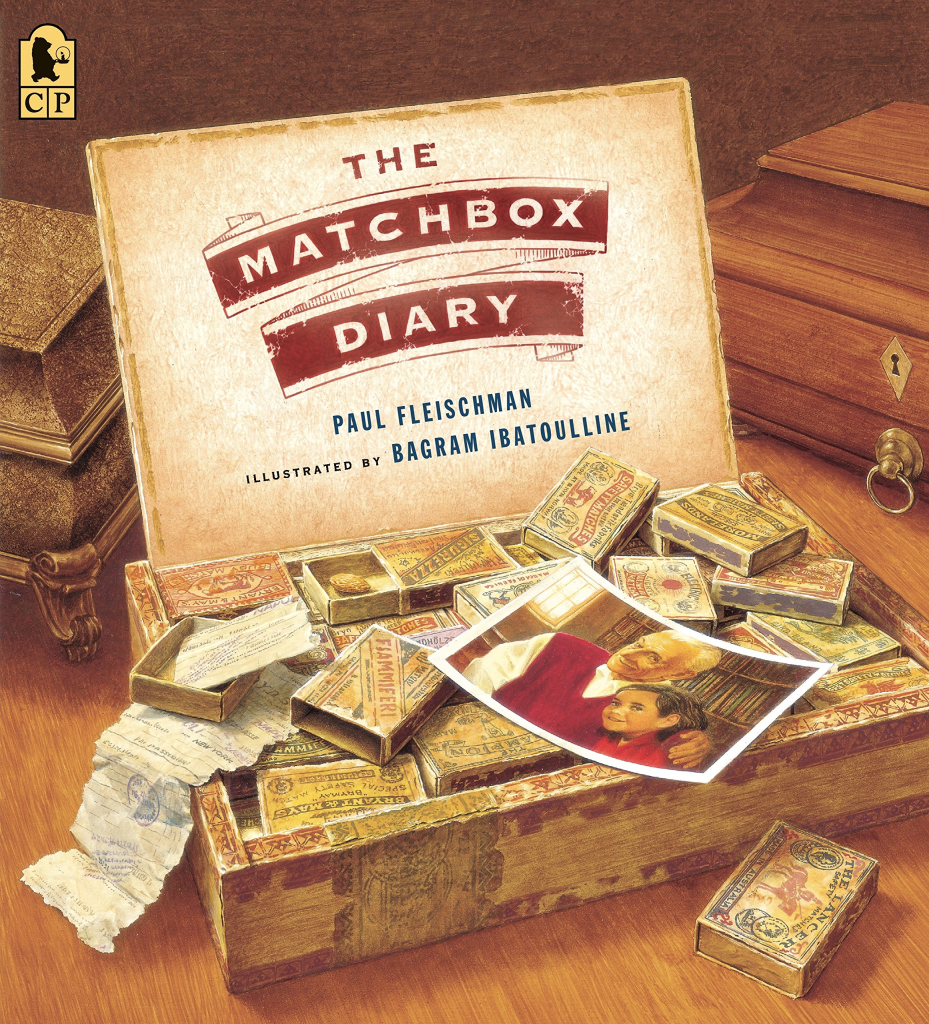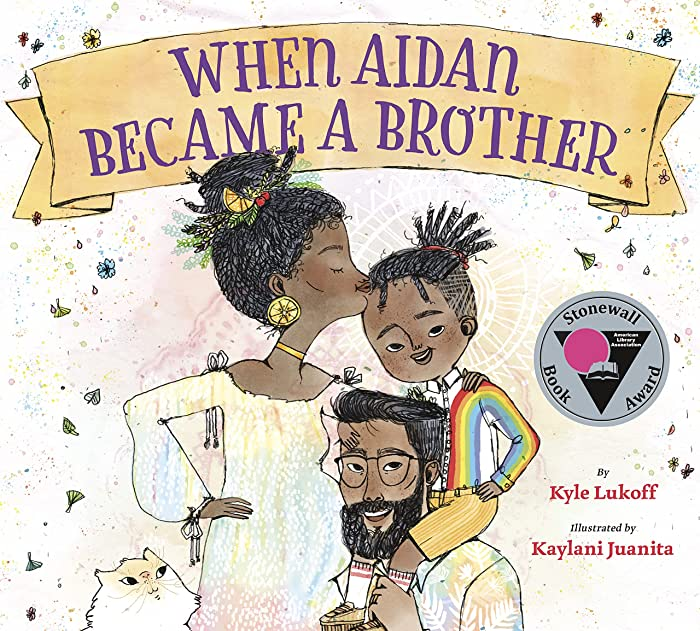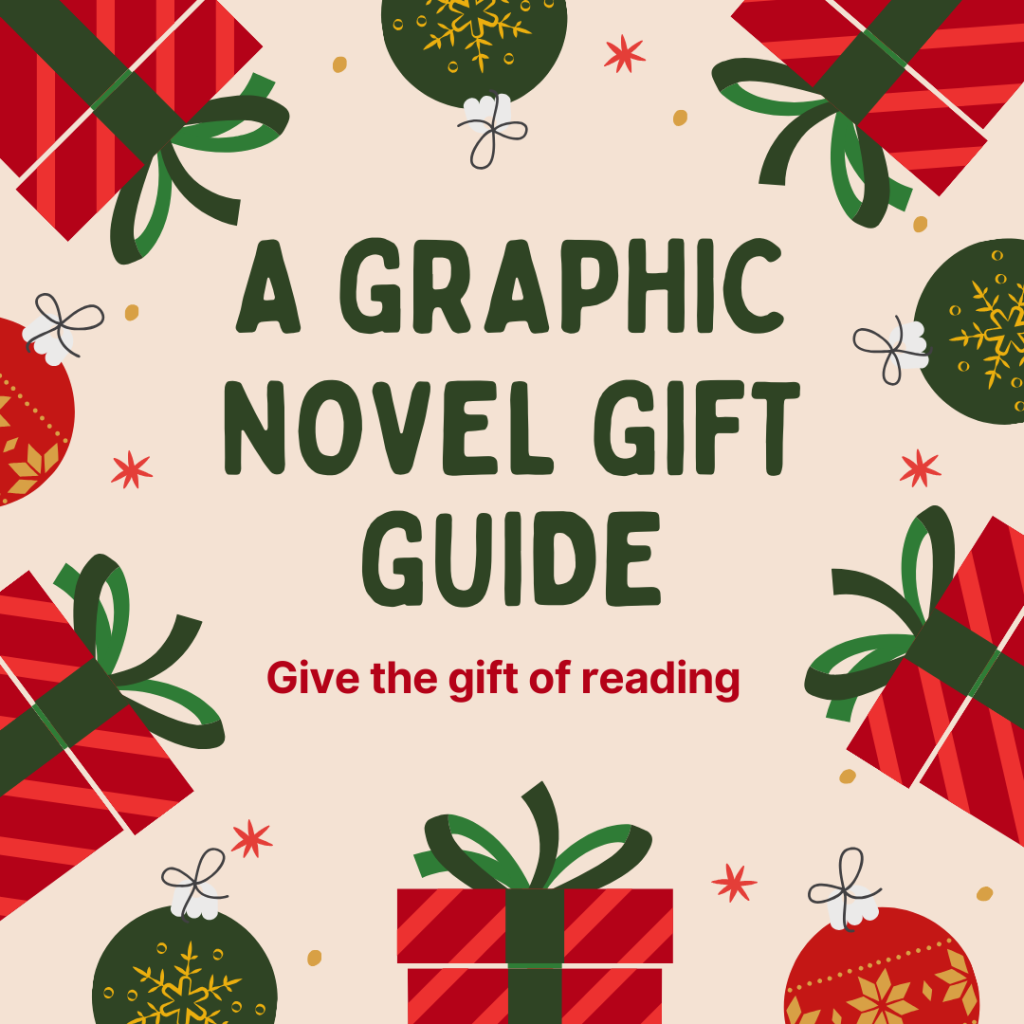
I love these end of the year lists that come out, especially now that I sit in Denmark and don’t get to see quite the same amount of books written in America as I normally would.
So I figured why not share some of my favorite graphic novels, starting with this gift guide in case you are looking for that perfect gift for yourself or another reader.
Maisie is on her way to Fancon! She’s looking forward to meeting her idol, Kara Bufano, the action hero from her favorite TV show, who has a lower-leg amputation, just like Maisie. But when Maisie and her mom arrive at the convention center, she is stopped in her tracks by Ollie, a cute volunteer working the show. They are kind, charming, and geek out about nerd culture just as much as Maisie does. And as the day wears on, Maisie notices feelings for Ollie that she’s never had before. Is this what it feels like to fall in love?
Huda and her sisters can’t believe it when her parents announce that they’re actually taking a vacation this summer . . . to DISNEY WORLD! But it’s not quite as perfect as it seems. First Huda has to survive a 24-hour road trip from Michigan to Florida, with her sisters annoying her all the way. And then she can’t help but notice the people staring at her and her family when they pray in public. Back home in Dearborn she and her family blend right in because there are so many other Muslim families, but not so much in Florida and along the way. It’s a vacation of forced (but unexpectly successful?) sisterly bonding, a complicated new friendship, a bit more independence, and some mixed feelings about her family’s public prayers. Huda is proud of her religion and who she is, but she still sure wishes she didn’t care so much what other people thought.
Pedro Martín has grown up hearing stories about his abuelito—his legendary crime-fighting, grandfather who was once a part of the Mexican Revolution! But that doesn’t mean Pedro is excited at the news that Abuelito is coming to live with their family. After all, Pedro has 8 brothers and sisters and the house is crowded enough! Still, Pedro piles into the Winnebago with his family for a road trip to Mexico to bring Abuelito home, and what follows is the trip of a lifetime, one filled with laughs and heartache. Along the way, Pedro finally connects with his abuelito and learns what it means to grow up and find his grito.
Sixth grade isn’t as great as Rex thought it would be. He’s the only kid who hasn’t had a growth spurt, and the bullies won’t let him forget it. His closest friend is unreliable, at best. And there’s a cute girl in his class, who may or may not like him back. With so much going on, everything is a blur — including Rex’s vision! So when he discovers that he needs glasses, and his family can only afford the ugliest pair in the store, any hope Rex had of fitting in goes completely out of focus.
Charlie has a foolproof plan for the first day at her new middle school. Even though she’s used to starting over as the new kid—thanks to her military family’s constant moving—making friends has never been easy for her. But this time, her first impression needs to last, since this is where her family plans to settle for good. So she’s hiding any interests that may seem “babyish,” updating her look, and doing her best to leave her shyness behind her…but is erasing the real Charlie the best way to make friends? When not everything goes exactly to plan—like, AT ALL—Charlie is ready to give up on making new friendships. Then she meets the Curlfriends, a group of Black girls who couldn’t be more different from each other, and learns that maybe there is a place for Charlie to be her true self after all.
Ignacio “Iggy” Garcia is an Ohio-born Colombian American teen living his best life. After bumping into Marisol (and her coffee) at school, Iggy’s world is spun around. But Marisol has too much going on to be bothered with the likes of Iggy. She has school, work, family, and the uphill battle of getting her legal papers. As Iggy stresses over how to get Marisol to like him, his grandfather comes to the rescue. The thing is, not only is his abuelito dead, but he also gives terrible love advice. The worst. And so, with his ghost abuelito’s meddling, Iggy’s life begins to unravel as he sets off on a journey of self-discovery.
Livy is already having trouble fitting in as the new girl at school—and then there’s Viola. Viola is Livy’s anxiety brought to life, a shadowy twin that only Livy can see or hear. Livy tries to push back against Viola’s relentless judgment, but nothing seems to work until she strikes up new friendships at school. Livy hopes that Viola’s days are numbered. But when tensions arise both at home and at school, Viola rears her head stronger than ever. Only when Livy learns how to ask for help and face her anxiety does she finally figure out living with Viola.
Dan’s always been a good kid. The kind of kid who listens to his teachers, helps his mom with grocery shopping, and stays out of trouble. But being a good kid doesn’t stop him from being bullied and feeling like he’s invisible, which is why Dan has low expectations when his parents send him on a class trip to Europe. At first, he’s right. He’s stuck with the same girls from his middle school who love to make fun of him, and he doesn’t know why his teacher insisted he come on this trip. But as he travels through France, Germany, Switzerland, and England, a series of first experiences begin to change him―first Fanta, first fondue, first time stealing a bike from German punk rockers… and first love.
This book tells the true stories of five brave teens fleeing their home countries of Guatemala, El Salvador, Honduras, and Guinea, on their own, traveling through unknown and unfriendly places, and ultimately crossing into the US to find refuge and seek asylum. Based on extensive interviews with teen refugees, lawyers, caseworkers, and activists, Tracy White shines a light on five individual kids from among the tens of thousands of unaccompanied minors who enter the US each year. In stark black and white illustrations, she helps us understand why some young people would literally risk their lives to seek safety in the US. Each one of them has been backed into a corner where emigration to the US seems like their only hope.
Mia is still getting used to living with her mom and stepfather, and to the new role their Jewish identity plays in their home. Feeling out of place at home and at her Jewish day school, Mia finds herself thinking more and more about her Muscogee father, who lives with his new family in Oklahoma. Her mother doesn’t want to talk about him, but Mia can’t help but feel like she’s missing a part of herself without him in her life.
Soon, Mia makes a plan to use the gifts from her bat mitzvah to take a bus to Oklahoma—without telling her mom—to visit her dad and find the connection to her Muscogee side she knows is just as important as her Jewish side.
Seventh-grader Viv never looks forward to picture day. It’s just another day where she wears a boring braid and no one notices her. (Her two best friends, Milo and Al, don’t count, of course.) But enough is enough. This year, she’s taking matters into her own hands. Literally. Viv grabs a pair of scissors, her phone for live-streaming, and, well, bye-bye braid. Suddenly Viv is an over-night influencer at Brinkley Middle School. Everyone wants her help planning their next big moment—from haircuts, to dance proposals, activist rallies and mathlete championships. She hardly even has time for her friends anymore. It’s exactly how she dreamed of reinventing herself…right?
A new year of school is starting, and Brit finds herself struggling with feelings for a seemingly rude boy from class who might have a soft side. Meanwhile, Christine can’t deny that she likes her best friend Abby…as more than just a friend. The only question is, does Abby have feelings for Christine, too? And will their feelings for each other mess things up in their friend group? Misunderstandings, betrayal, and jealousy are bound to get in the way. But hey! Look on the bright side: They’re in this together. Always.
Darrin Bell was six years old when his mother told him he couldn’t have a realistic water gun. She said she feared for his safety, that police tend to think of little Black boys as older and less innocent than they really are.
Through evocative illustrations and sharp humor, Bell examines how The Talk shaped intimate and public moments from childhood to adulthood. While coming of age in Los Angeles―and finding a voice through cartooning―Bell becomes painfully aware of being regarded as dangerous by white teachers, neighbors, and police officers and thus of his mortality. Drawing attention to the brutal murders of African Americans and showcasing revealing insights and cartoons along the way, he brings us up to the moment of reckoning when people took to the streets protesting the murders of George Floyd and Breonna Taylor. And now Bell must decide whether he and his own six-year-old son are ready to have The Talk.
Shakti is used to being the new girl at school. She and her two moms have moved more times than she can count. With her unborn baby brother on the way, Shakti hopes her family has found their forever home in Amherst, Massachusetts, and that she can finally make friends.
On her first day of seventh grade, she meets Xi and they bond over their shared passion for manga (and pizza with mayo). But the three meanest girls in school—Harini, Emily, and Kelly (aka “HEK”)—are determined to make life miserable for Shakti and her new friends.
When Shakti and Xi discover HEK casting spells in the woods, they fear what might happen to the other kids at school. Drawing on ancient Indian magic, Shakti seeks the aid of Durga Ma to stop HEK. But instead, Shakti accidentally conjures Kali Ma, the destroyer—Durga Ma’s dangerous twin. Kali Ma punishes HEK by transforming them into monsters and curses the entire town. As more and more people begin to fall ill, including Shakti’s mom, will Shakti be able to harness her own strength, power, and empathy to save those she loves—and put an end to all the hate?
Feng-Li can’t wait to discover America with her family! But after an action-packed vacation, her parents deliver shocking news: They are returning to Taiwan and leaving Feng-Li and her older siblings in California on their own.
Suddenly, the three kids must fend for themselves in a strange new world–and get along. Starting a new school, learning a new language, and trying to make new friends while managing a household is hard enough, but Bro and Sis’s constant bickering makes everything worse. Thankfully, there are some hilarious moments to balance the stress and loneliness. But as tensions escalate–and all three kids get tangled in a web of bad choices–can Feng-Li keep her family together?

Sarah has always struggled to fit in. Born in South Korea and adopted at birth by a white couple, she grows up in a rural community with few Asian neighbors. People whisper in the supermarket. Classmates bully her. She has trouble containing her anger in these moments―but through it all, she has her art. She’s always been a compulsive drawer, and when she discovers anime, her hobby becomes an obsession.
Which would you add?
